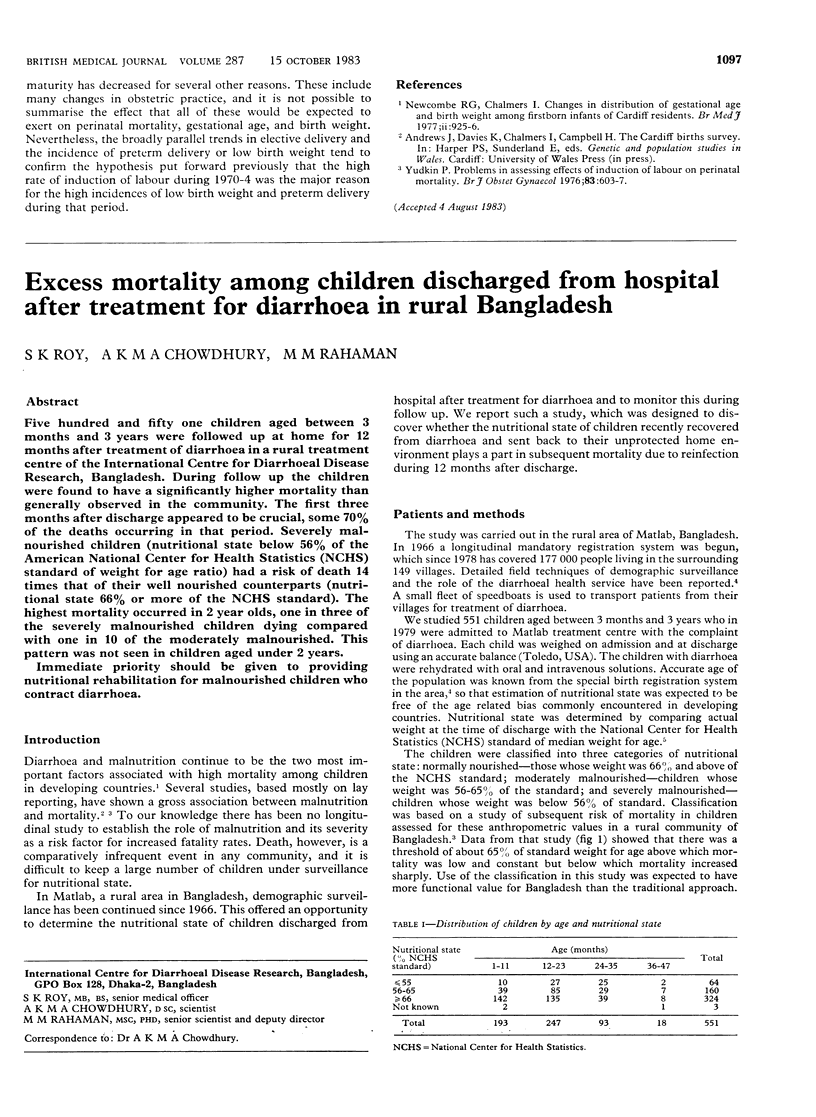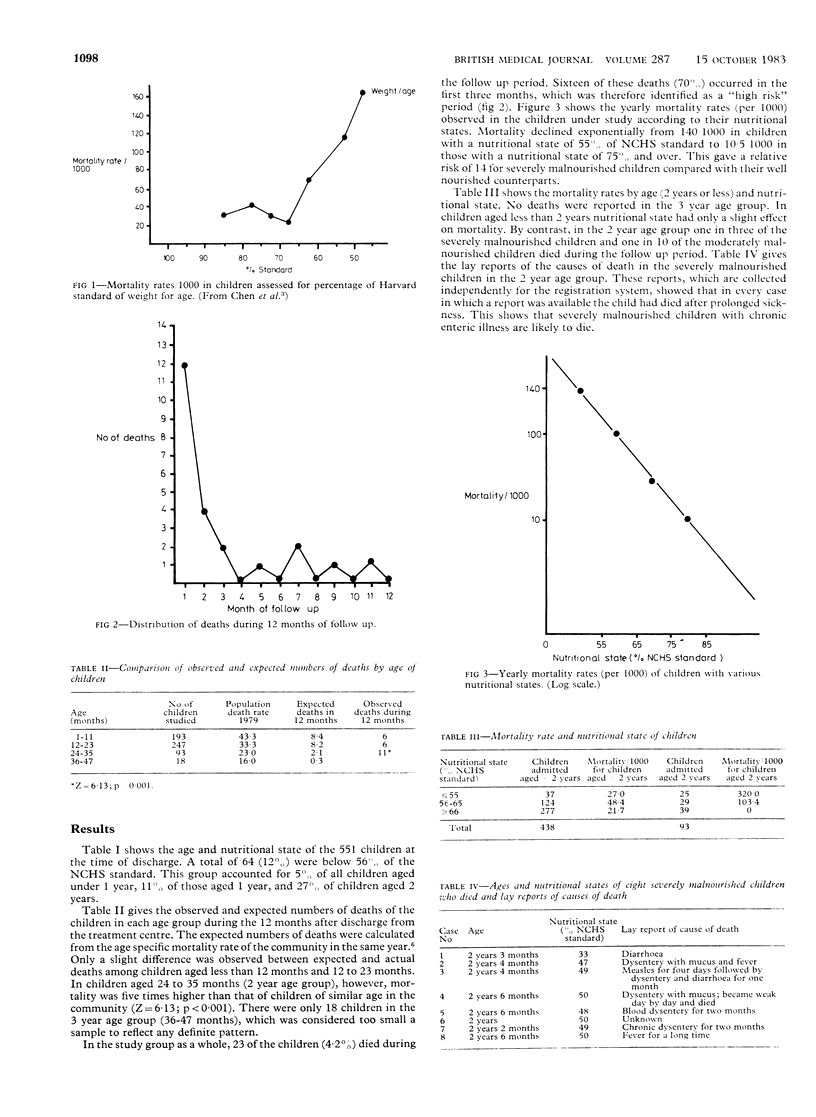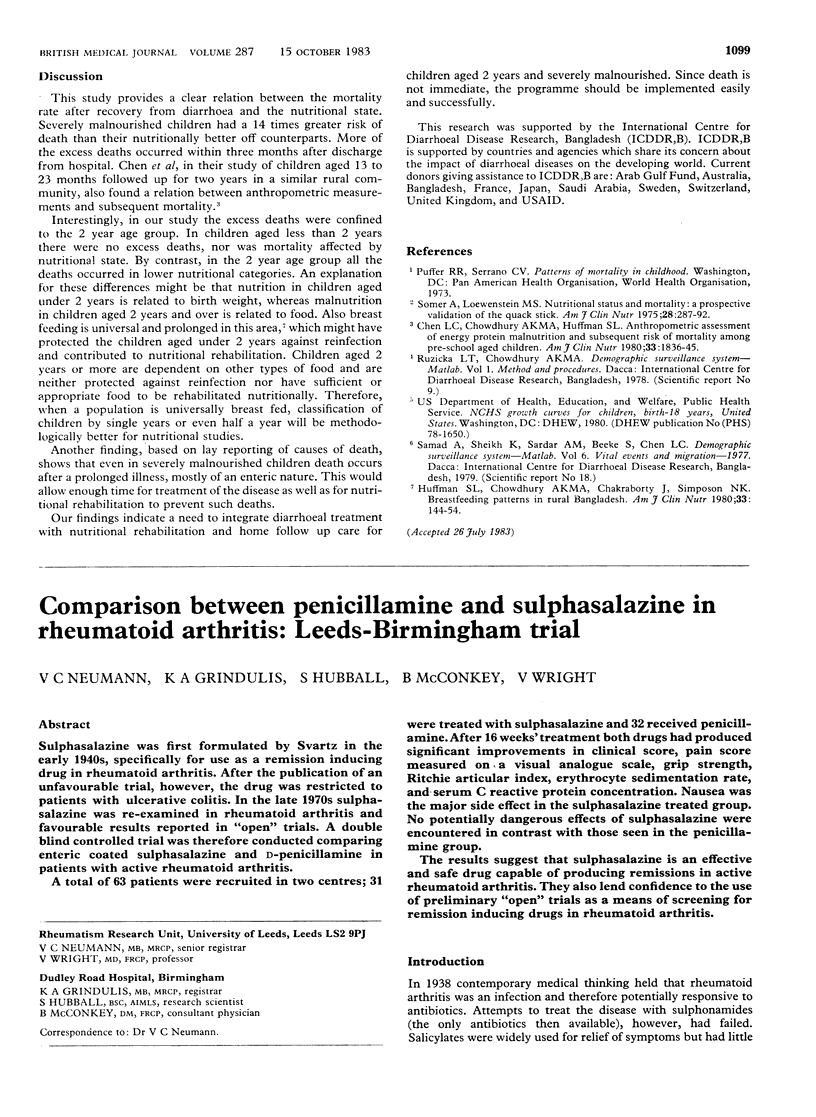Abstract
Five hundred and fifty one children aged between 3 months and 3 years were followed up at home for 12 months after treatment of diarrhoea in a rural treatment centre of the International Centre for Diarrhoeal Disease Research, Bangladesh. During follow up the children were found to have a significantly higher mortality than generally observed in the community. The first three months after discharge appeared to be crucial, some 70% of the deaths occurring in that period. Severely malnourished children (nutritional state below 56% of the American National Center for Health Statistics (NCHS) standard of weight for age ratio) had a risk of death 14 times that of their well nourished counterparts (nutritional state 66% or more of the NCHS standard). The highest mortality occurred in 2 year olds, one in three of the severely malnourished children dying compared with one in 10 of the moderately malnourished. This pattern was not seen in children aged under 2 years. Immediate priority should be given to providing nutritional rehabilitation for malnourished children who contract diarrhoea.
Full text
PDF


Selected References
These references are in PubMed. This may not be the complete list of references from this article.
- Chen L. C., Chowdhury A., Huffman S. L. Anthropometric assessment of energy-protein malnutrition and subsequent risk of mortality among preschool aged children. Am J Clin Nutr. 1980 Aug;33(8):1836–1845. doi: 10.1093/ajcn/33.8.1836. [DOI] [PubMed] [Google Scholar]
- Huffman S. L., Chowdhury A., Chakraborty J., Simpson N. K. Breast-feeding patterns in rural Bangladesh. Am J Clin Nutr. 1980 Jan;33(1):144–154. doi: 10.1093/ajcn/33.1.144. [DOI] [PubMed] [Google Scholar]
- Sommer A., Loewenstein M. S. Nutritional status and mortality: a prospective validation of the QUAC stick. Am J Clin Nutr. 1975 Mar;28(3):287–292. doi: 10.1093/ajcn/28.3.287. [DOI] [PubMed] [Google Scholar]


